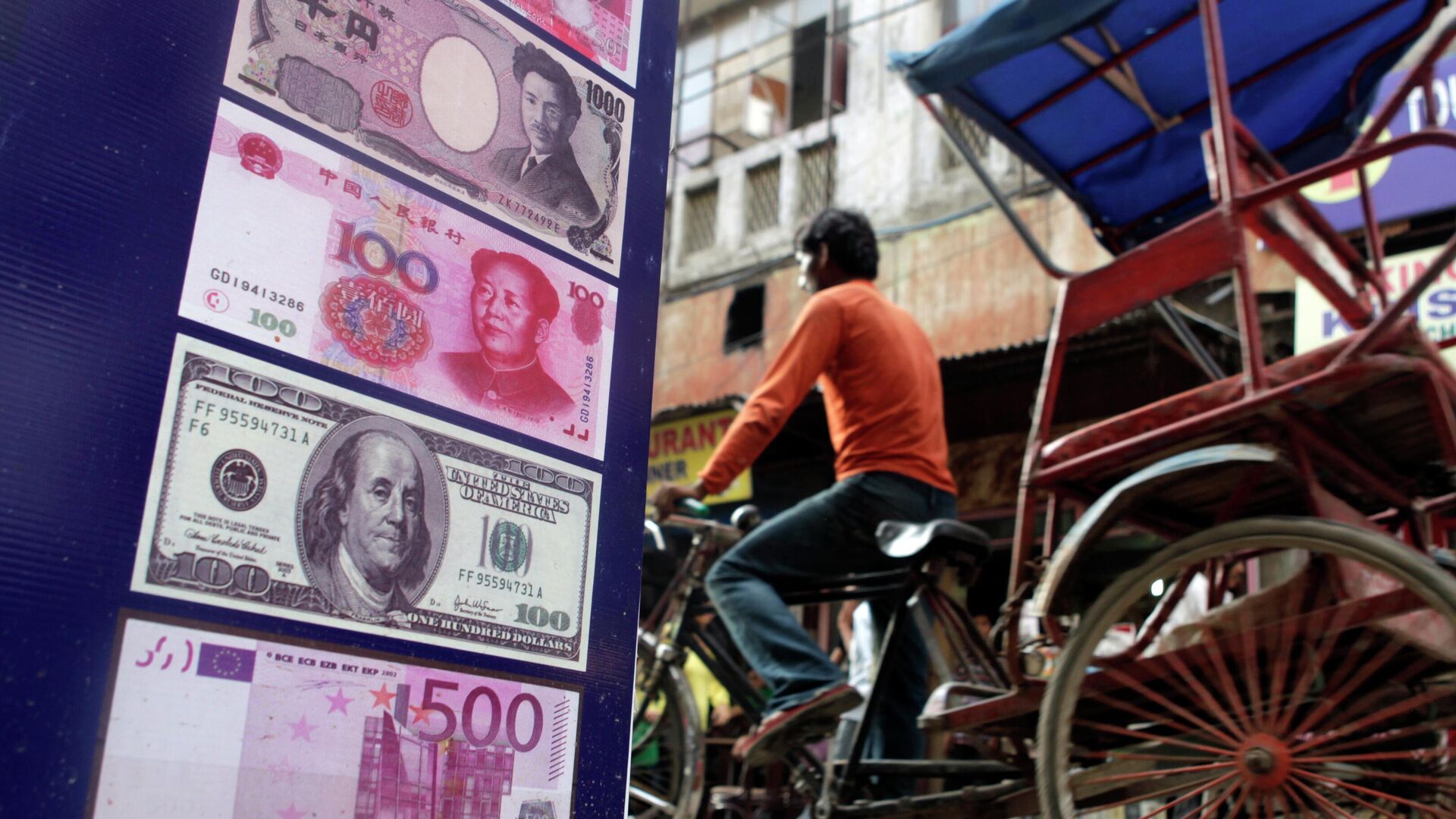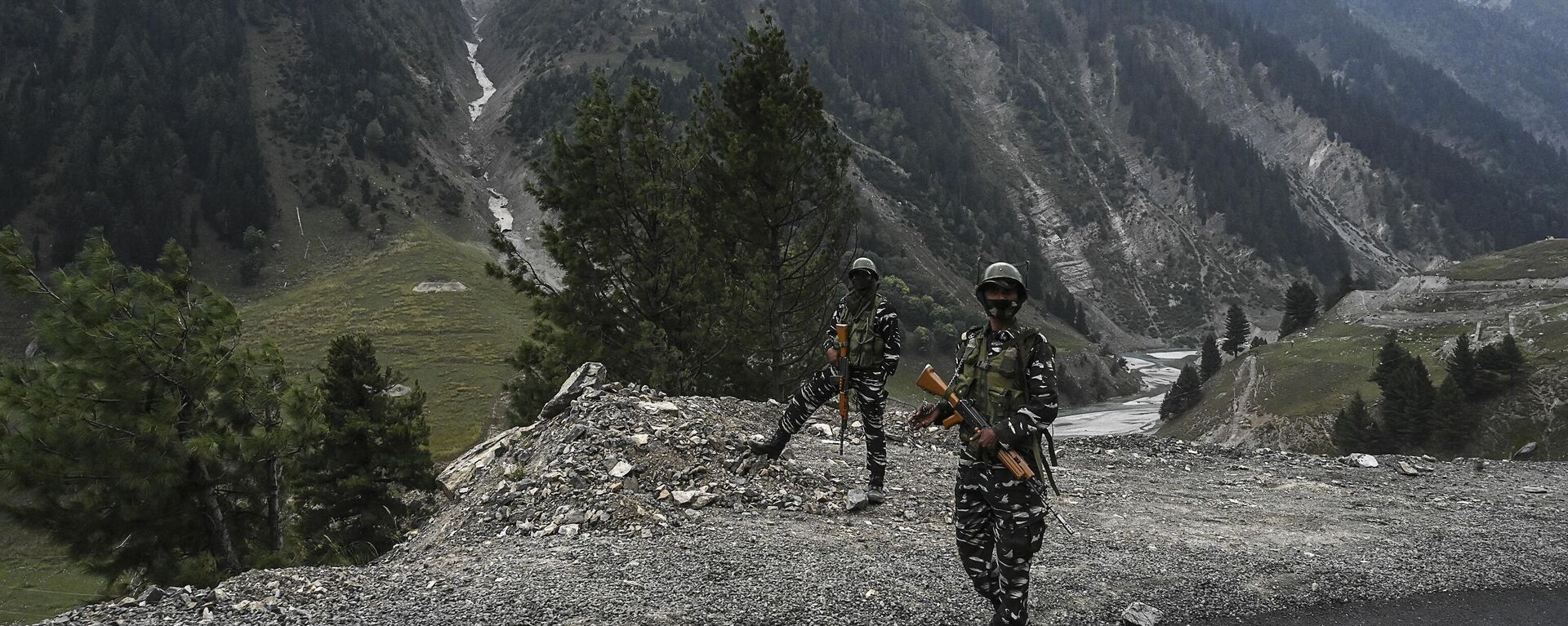https://sputniknews.in/20230516/russia-india-trade-will-get-a-further-boost-with-settlement-in-chinese-yuan-expert-1997680.html
Russia-India Trade Will Get a ‘Further Boost’ With Settlement in Chinese Yuan: Expert
Russia-India Trade Will Get a ‘Further Boost’ With Settlement in Chinese Yuan: Expert
Sputnik India
Bilateral trade between India and Russia, which hit an all-time high of $40 billion last financial year, will receive a “further boost” if both the countries can start trading in Yuan Renminbi, an expert has told Sputnik.
2023-05-16T18:54+0530
2023-05-16T18:54+0530
2023-05-16T18:54+0530
sputnik opinion
india
russia
china
trade in national currencies
rupee-rouble trade
china-pakistan economic corridor (cpec)
ladakh
shanghai cooperation organisation (sco)
https://cdn1.img.sputniknews.in/img/07e7/03/1f/1382562_0:0:3241:1824_1920x0_80_0_0_880cb1eb9820624874dff08b269fdf3e.jpg
Bilateral trade between India and Russia, which hit an all-time high of $40 billion last financial year, will receive a “further boost” if both the countries can start trading in Yuan Renminbi, an expert has told Sputnik.The comments come as Russia emerged as the second-largest supplier of goods to India in January-March 2023 quarter, as per data by India’s Ministry of Commerce and Industry.Beijing was the still the biggest supplier of goods to New Delhi in the quarter, though the value of imports registered a 15.4 per cent decline when stacked up data from January-March 2022 quarter.Although though the Indian government is actively pursuing a financial policy of trading in national currencies, it has reportedly advised business to try and avoid the usage of Yuan in settling accounts.Devonshire-Ellis noted that New Delhi’s growing imports of Russian crude has created a “significant trade imbalance” between the two traditional partners.Amid a record surge in trade, India’s trade deficit with Russia also hit $34.79 billion between April 2022 and January 2023, driven by a significant spike in Russian crude exports.Both the governments have decided to address the trade imbalance and market access issues at the India-Russia Inter-Governmental Commission onTrade, Economic, Scientific, Technological and Cultural Cooperation (IRIGC -TEC) in New Delhi last month.India and the Eurasian Economic Union (EAEU), of which Russia is the biggest player, are also negotiating a free trade pact to address the issues to diversify trade and reduce trade imbalance.Ladakh Standoff, CPEC Major Issues Between India and ChinaDevonshire-Ellis underlined India and China would not only to need to resolve the ongoing military standoff in the eastern Ladakh region, but also the differences which have arisen due to a part of the China-Pakistan Economic Corridor (CPEC) passing through the Jammu and Kashmir region.New Delhi has maintained that the state of the Sino-India border would reflect the state of the overall bilateral relationship. Indian foreign minister S Jaishankar told his Chinese counterpart Qin Gang that ties between the two nations are “abnormal” owing to the border standoff.At the recent Shanghai Cooperation Organization (SCO) Council of Foreign Ministers (CFM) meeting in Goa this month, Jaishankar also told his other counterparts that connectivity initiatives mush respect sovereignty and territorial integrity, a veiled criticism of the CPEC.He also noted that even though India wanted China to be part of the larger political imaginary of ‘Global South’, achieving such an outcome remained a “significant diplomatic challenge” for both the capitals.
https://sputniknews.in/20230418/india-russia-decide-to-unlock-full-potential-of-economic-ties-1603654.html
https://sputniknews.in/20230425/speed-up-settlement-of-ladakh-dispute-beijing-says-ahead-of-defence-ministers-india-visit-1678140.html
india
russia
china
china-pakistan economic corridor (cpec)
ladakh
Sputnik India
feedback.hindi@sputniknews.com
+74956456601
MIA „Rossiya Segodnya“
2023
Sputnik India
feedback.hindi@sputniknews.com
+74956456601
MIA „Rossiya Segodnya“
News
en_IN
Sputnik India
feedback.hindi@sputniknews.com
+74956456601
MIA „Rossiya Segodnya“
Sputnik India
feedback.hindi@sputniknews.com
+74956456601
MIA „Rossiya Segodnya“
india russia news, india russia trade, india russia oil trade, india russia oil, india china news, india china border, india china trade, trade in indian rupees, trade in yuan
india russia news, india russia trade, india russia oil trade, india russia oil, india china news, india china border, india china trade, trade in indian rupees, trade in yuan
Russia-India Trade Will Get a ‘Further Boost’ With Settlement in Chinese Yuan: Expert
The Chinese yuan replaced the US dollar as the most traded currency in Russia this year, as per data compiled by Bloomberg. A major chunk of bilateral trade between Russia and China, which surged to $185 billion last year is also being carried out in yuan.
Bilateral trade between India and Russia, which
hit an all-time high of $40 billion last financial year, will receive a “further boost” if both the countries can start
trading in Yuan Renminbi, an expert has told Sputnik.
“Russia would prefer India to pay in Chinese RMB Yuan. However, due to political (and military) differences with China, India is unwilling to do this. Curiously, therefore, the main issue facing Russia-India trade is actually the (usage of) Chinese RMB Yuan,” said Chris Devonshire-Ellis, the Chairman of Dezan Shira & Associates, a business consultancy.
The comments come as Russia emerged as the second-largest supplier of goods to India in January-March 2023 quarter, as per data by India’s Ministry of Commerce and Industry.
Beijing was the still the biggest supplier of goods to New Delhi in the quarter, though the value of imports registered a 15.4 per cent decline when stacked up data from January-March 2022 quarter.
Although though the Indian government is actively pursuing a financial policy of trading in national currencies, it has reportedly advised business to try and avoid the usage of Yuan in settling accounts.
Devonshire-Ellis noted that New Delhi’s growing imports of Russian crude has created a “significant trade imbalance” between the two traditional partners.
“This has skewed the volumes of Russian receipts of Indian Rupees, of which it now has a significant surplus. Moscow is finding it difficult to swap them on the international markets,” he stated.
Amid a record surge in trade, India’s trade deficit with Russia also hit $34.79 billion between April 2022 and January 2023, driven by a significant spike in Russian crude exports.
Both the governments have decided to address the trade imbalance and market access issues at the India-Russia Inter-Governmental Commission onTrade, Economic, Scientific, Technological and Cultural Cooperation (IRIGC -TEC) in New Delhi last month.
India and the Eurasian Economic Union (EAEU), of which Russia is the biggest player, are also negotiating a free trade pact to address the issues to diversify trade and reduce trade imbalance.
Ladakh Standoff, CPEC Major Issues Between India and China
Devonshire-Ellis underlined India and China would not only to need to resolve the ongoing military standoff in the eastern Ladakh region, but also the differences which have arisen due to a part of the China-Pakistan Economic Corridor (CPEC) passing through the Jammu and Kashmir region.
New Delhi has maintained that the state of the Sino-India border would reflect the state of the overall bilateral relationship. Indian foreign minister S Jaishankar told his Chinese counterpart Qin Gang that ties between the two nations are “abnormal” owing to the border standoff.
At the recent Shanghai Cooperation Organization (SCO) Council of Foreign Ministers (CFM) meeting in Goa this month, Jaishankar also told his other counterparts that connectivity initiatives mush respect sovereignty and territorial integrity, a veiled criticism of the CPEC.
"However, that (the question of CPEC) depends upon how India and China can resolve their differences. It also involves Pakistani territorial claims. The situation remains complex,” Devonshire-Ellis stated.
He also noted that even though India wanted China to be part of the larger political imaginary of ‘Global South’, achieving such an outcome remained a “significant diplomatic challenge” for both the capitals.



